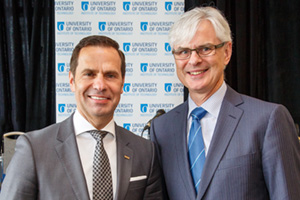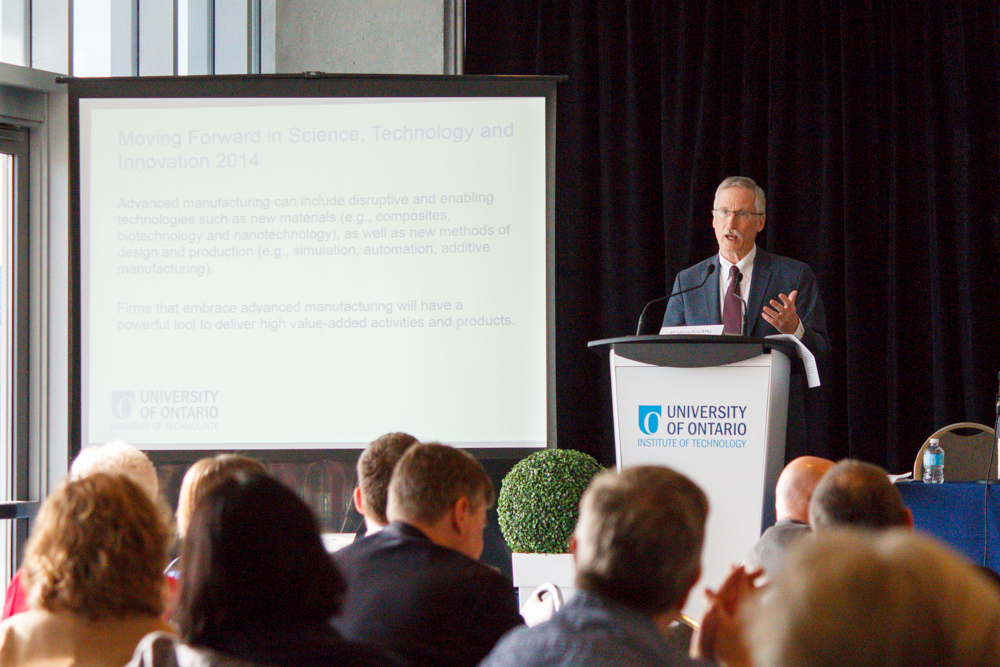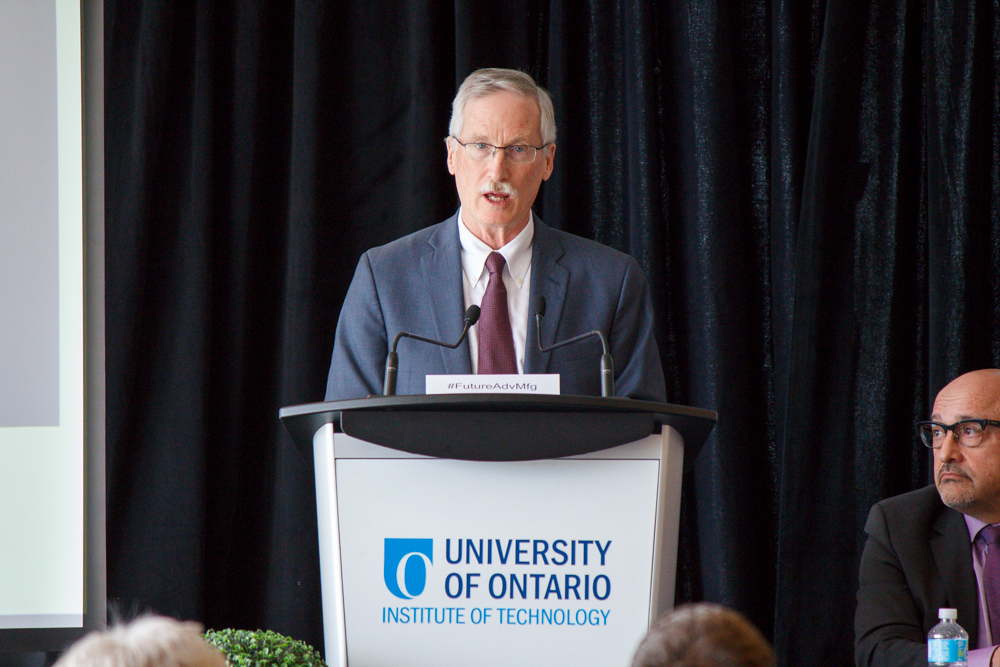A catalyst for the future of advanced manufacturing
UOIT hosts first in series of forums on public policy challenges
April 20, 2015

Every company looks ahead for what it can do to improve manufacturing, whether that’s imagining the future of the next quarter or of the next business cycle.
The University of Ontario Institute of Technology (UOIT) is doing that too, but it’s looking to what might happen decades ahead. And, to the surprise of some who may see universities as thriving in isolation of the real word, UOIT is looking at the future of advanced manufacturing in concert with business.
UOIT demonstrated its engagement with advanced manufacturing at a half-day conference in April at the university’s campus in Oshawa, Ontario. Several Canadian Manufacturers & Exporters (CME) members participated at the conference, including Siemens Canada, IBM, General Motors and Cimetrix Solutions.
UOIT is one of Canada’s newest research universities, having opened its doors in 2003. The university has grown to 10,000 students in seven faculties, with an emphasis on studies and research in science, technology, engineering and mathematics. UOIT has earned 11 Canada Research Chairs (CRC); one, Dr. Dan Zhang, the CRC in Advanced Robotics and Automation, focuses on the next-generation of industrial robotics -- innovations that help to perform tasks faster, more accurately and with greater adaptability to changing work assignment and conditions.
UOIT President Tim McTiernan states proudly that the university’s DNA links its formal studies to hands-on learning, such as placements, internships and international exchanges. Case in point, two years after graduating, 87 per cent of UOIT’s graduates working full-time are employed in their field of study. “We view our university as a catalyst for discussions in the factories, offices and boardrooms of the companies that hire our students,” said McTiernan. “That’s why we host events like this forum on advanced manufacturing.”
Siemens Canada President and CEO, Robert Hardt, used his role as keynote speaker to debunk some myths about manufacturing in Canada and to challenge the education sector to work better with the manufacturing and exporting sectors. Hardt noted that while KPMG and Statistics Canada suggest manufacturing is gaining strength, those facts fail to make a difference as Canada moves into the future. “The industries that are succeeding in 2025 will be seriously asking, ‘What do we need to change, in order to succeed?’” said Hardt. “Because continual innovation is now at the very heart of the manufacturing sector…Ten years from now, companies will have adopted a motto that is very close to my heart: ‘We are succeeding. Therefore, we must change.’”
Hardt also said existing education and training programs could do a better job of meeting the needs of the industries that hire their graduates. “We look forward to additional collaboration between classrooms and business, and to seeing graduates and apprentices who are truly prepared for the workplace.”
Conference panelist Kal Gyimesi, Automotive Industry Marketing Leader with IBM Analytics, echoed that sentiment of change: “At the start of this decade, the automotive industry’s growth strategy focused on expansion into new markets. But in 2015, the perspective is radically different. Executives now see a future industry that is collaborative and borderless…the majority say collaboration with other industries is the new number-one strategy. This is a significant shift in thinking in what has traditionally been a closed industry. Those welcoming new ideas and openness in transforming the business are the ones setting the stage for success.”
The conference ended with a tour of UOIT’s ACE – a three-storey climactic wind-tunnel that has tested products for clients from the Canadian and international aerospace, automotive and sports equipment sectors. Future UOIT forums will focus on energy sustainability, smart cities and other public policy challenges.
4 > 1






